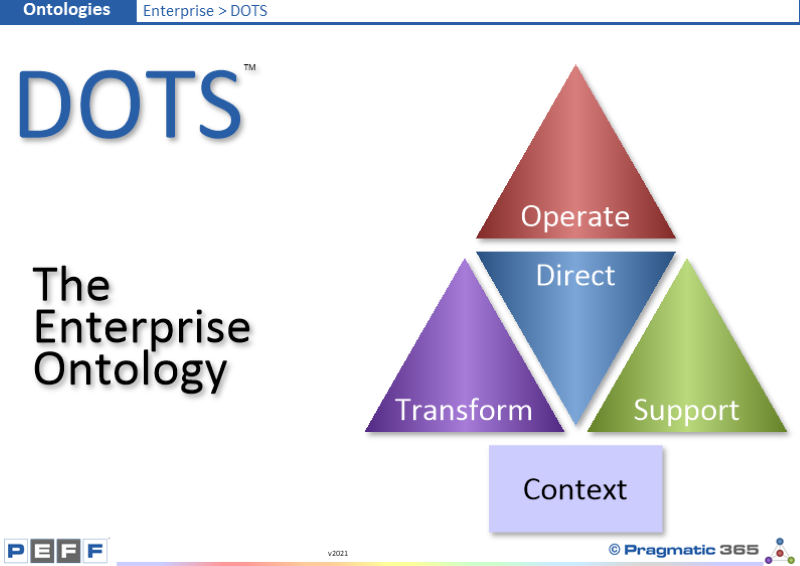
Pragmatic asserts that every
Enterprise consists of four distinct conceptual parts which a) totally and
completely defines all Enterprises without overlaps or gaps, b) are the most
fundamentally important to the Board and the sustainability of the Enterprise
and c) have different operating models, different cultures, different languages,
different drivers, different mind-sets, different tools, different processes,
different artefacts, etc.
...to read more, please Login or Register